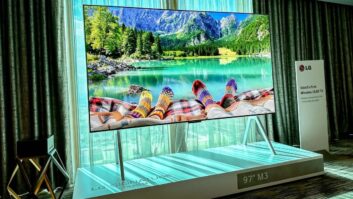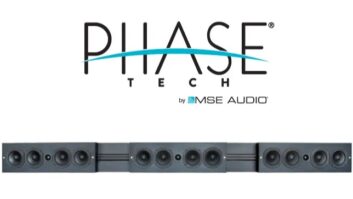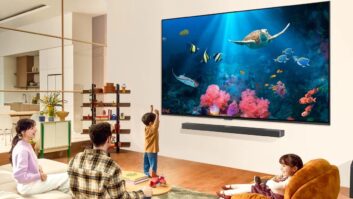Arlington, Va. — The Consumer Electronics Association submitted results of a new consumer study to the Senate and House Commerce Committees showing that 12 percent of the 285 million U.S. televisions (or 33.6 million sets) are used to receive over-the-air (OTA) television broadcasts.
The study also found that approximately 10 percent of all TVs in U.S. households are used exclusively for an activity other than viewing broadcast television programming (such as viewing DVDs, playing video games). In addition, more than a quarter of households that rely only on OTA broadcasts to receive television programming have at least one TV in the home used exclusively for an activity other than viewing broadcast television.
“This letter provides specific data on ownership and usage of TV sets in American homes,” wrote CEA’s president/CEO Gary Shapiro. “We provide this data to arm you with the facts to quantify the likely costs of various policy alternatives regarding the end of analog broadcasting.”
Last month, Shapiro told House Energy & Commerce Committee members that 13 percent of American households rely on OTA broadcasts to receive television programming, while 87 percent receive programming from multi-channel video services such as cable and satellite.
National Association of Broadcasters’ (NAB) president Eddie Fritts called those earlier numbers “wildly inaccurate,” when compared with an estimate of 19 percent (or 21 million homes) issued by the Government Accounting Office in February.
CEA said the latest information, which focuses on the uses of all television sets, was offered to committee members to assist them in assessing the needs of all Americans when analog broadcasting ceases.
Among the considerations in establishing a hard analog cut-off date, legislators are debating the need for subsidizing some or all residents who rely on OTA broadcasts for the cost of converter digital-to-analog converter equipment.
The House Commerce Committee is preparing to consider legislation currently under development by Commerce Committee chairman Joe Barton (R-Tex.) that will set a hard cut-off date for analog broadcasts. The Senate Commerce Committee is preparing to release draft digital television legislation later this month.
CEA said its calculations were derived partially on information from Nielsen Media Research, which shows 109.7 million U.S. television households, each owning an average of 2.6 televisions.
CEA employed the firm of Opinion Research to determine how each of the 285 million television sets is used. The study found that only 5.2 million (3 percent) of TVs in households subscribing to cable are not connected to cable service.
Of these, approximately 474,000 are used exclusively to view something other than television programming, leaving 4.7 million TVs (less than 3 percent) in these households used for viewing OTA television.
Just over 7 million (9.8 percent) of the 71 million TVs in satellite households are used for viewing OTA broadcasts while only 200,000 of the 3.46 million TVs in households subscribing to both cable and satellite are used for OTA viewing, CEA said.
“Clearly, the vast majority of TVs in the United States are not used to view over-the-air television and we can presume that these numbers will diminish as more and more Americans subscribe to pay TV services, including coming technologies such as TV-over-IP, via telephony and even powerline,” said Shapiro. “More than 88 percent of today’s TVs are connected to cable or satellite service or are used to play video games, watch pre-recorded content or some other non-broadcast television function.”
Of total TV households, the survey found that 65.7 million (60 percent) subscribe to cable, 26 million (24 percent) subscribe to digital satellite and 2.7 million (2 percent) subscribe to both.Another 2.1 million households (2 percent) report that they do not subscribe to a pay TV service nor use an antenna to receive over-the-air television.
“The finding that approximately 86 percent of American homes receive cable, satellite or both mirrors the results of three separate CEA consumer studies conducted over the past several years and is further supported by hard subscriber data from the National Cable Television Association, Echostar and DirecTV,” wrote Shapiro.“Similar results have been reached by others including the Federal Communications Commission, Nielsen Media Research and the Analysis Group.”













